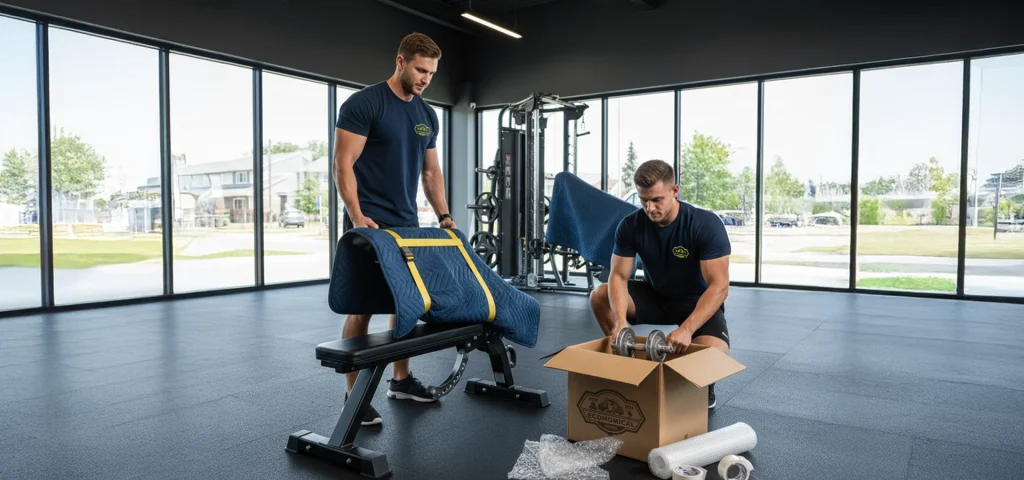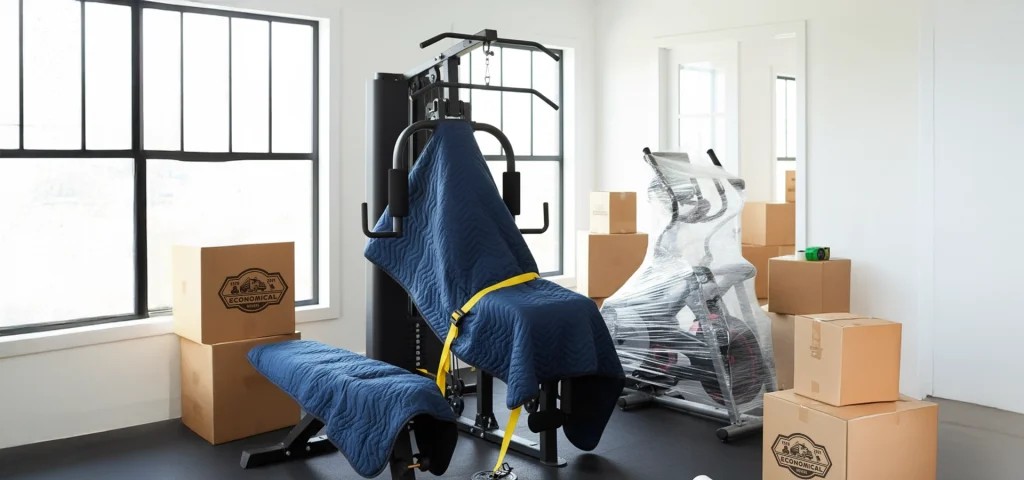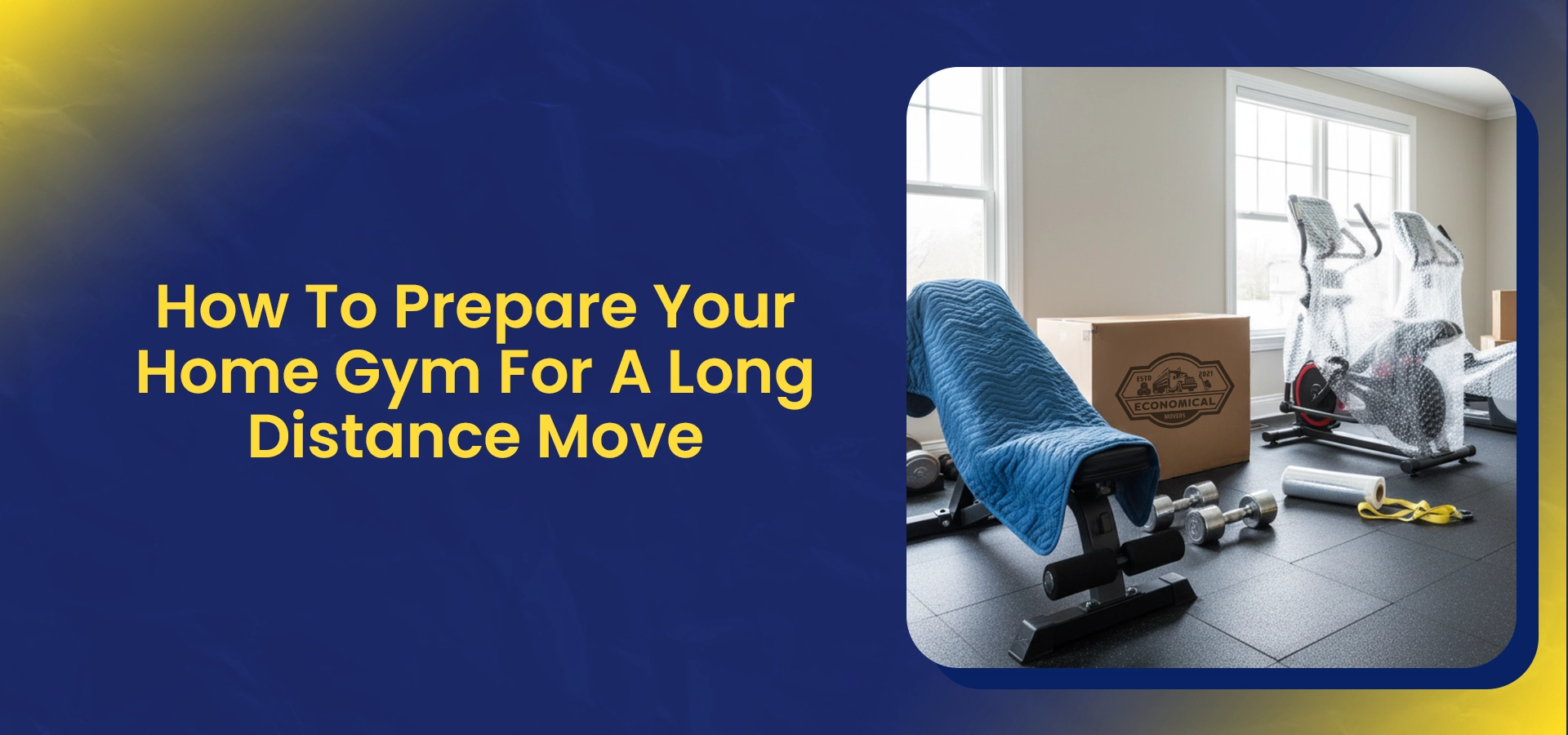Learn how to prepare home gym for long distance move with packing, equipment safety, and moving tips to avoid damage and stress.
Moving your home gym can be one of the most challenging parts of relocating. Equipment like treadmills, ellipticals, dumbbells, and rowing machines is bulky, heavy, and sometimes delicate. Without proper planning, you risk damaging your machines or worse, injuring yourself. That’s why preparing your gym before a long distance move is essential. With the right strategies, you can ensure the safety of your home gym equipment and make your relocation smooth and efficient.
This guide offers practical, step-by-step guidance on how to prepare home gym for long distance move. Following these tips will save time, protect your investment, and give you peace of mind during your move.
How To Move Home Gym Equipment Over Long Distance
Moving home gym equipment or entire gym over a long distance requires careful planning, proper packing, and the right techniques to ensure all equipment arrives safely and remains in perfect working condition.
Assess Your Home Gym Before the Move
- Take inventory of all equipment: treadmills, ellipticals, stationary bikes, rowing machines, dumbbells, and resistance bands.
- Decide what to keep, sell, donate, or discard to reduce moving costs.
- Measure doorways, hallways, and rooms in your new home to ensure equipment fits.
- Identify heavy or delicate machines that need special handling.
- Create a checklist to track all equipment and prevent items from being forgotten or damaged.
Prepare Home Gym for Long Distance Move

Cleaning and Maintenance
Before the move, clean all machines thoroughly. Dust, sweat, and moisture can lead to rust or mould during transport. Check manufacturer manuals for moving-specific instructions some machines require locking mechanisms, lubrication, or partial disassembly. Proper maintenance ensures that equipment stays in optimal condition.
Disassemble Large Machines
For heavy and bulky machines such as treadmills, ellipticals, and weight benches, disassemble gym equipment whenever possible. Label every screw, bolt, and small part, and store them in clearly marked bags. Organized hardware and clear labelling make reassembly straightforward and stress free.
Protect Equipment During Transport
Wrap machines in moving blankets, bubble wrap, or thick plastic to prevent scratches, dents, and moisture damage. Secure removable parts such as cables, weights, pedals, or consoles. For electronic components, use extra padding or protective boxes to maintain home gym equipment safety throughout the long distance move.
Packing Tips For Moving Gym Equipment
Proper packing is the key to moving gym equipment or if shifting entire gym safely over a long distance. Bulky machines and weights can easily get damaged or cause injury if not handled correctly. Use these proven steps to pack your gym equipment like a pro:
Step 1: Gather Essential Packing Tools
Get moving blankets, bubble wrap, heavy-duty tape, plastic wrap, dollies, and lifting straps. Having everything ready before packing makes the process smoother and safer.
Step 2: Protect and Disassemble Large Machines
Wrap treadmills, ellipticals, and benches with moving blankets and bubble wrap. Remove and secure cables, pedals, or weights. Keep screws and bolts in labelled bags taped to the machine for easy reassembly.
Step 3: Pack Weights and Small Equipment
Distribute dumbbells, kettlebells, and plates into sturdy boxes without overloading. Wrap resistance bands and electronics in bubble wrap for added protection.
Step 4: Label All Boxes Clearly
Mark contents, weight, and room placement on each box. For machines, add “This Side Up” and “Fragile” to avoid mishandling.
Step 5: Load Strategically in the Truck
Place heavier machines at the bottom, stack lighter items above, and secure everything with straps to prevent shifting during transit.
Hiring Gym Movers or DIY?
When it comes to moving fitness accessories, hiring home gym movers is often the safest and most efficient choice, especially for bulky or delicate equipment. While some people may consider a DIY move, movers bring experience, tools, and strategies.

| Factor | DIY Move | Economical Movers |
|---|---|---|
| Time Required | 1–2 days | Few hours with trained crew at Economical Movers |
| Risk of Damage | High | Very low |
| Equipment Needed | Rent dollies, straps, blankets | Have all tools and packing materials |
| Cost | Lower upfront | Higher upfront, but safer investment with insurance |
| Safety | Risk of injury | Fully insured and trained handling |
Why Hire Gym Movers:
- Expert Handling: Movers are trained to safely move treadmills, ellipticals, weight benches, and other heavy equipment without causing damage.
- Specialized Equipment: They bring dollies, straps, and protective materials to secure machines during transport.
- Time and Stress Savings: Professionals can pack, load, and transport your gym much faster than attempting it yourself.
- Damage Prevention: Proper wrapping, padding, and secure transport minimize the risk of scratches, dents, or mechanical issues.
- Insurance Coverage: Many gym movers offer protection for your equipment, giving peace of mind during a long distance gym relocation.
How Much Does It Cost to Move A Home Gym?
The cost of moving a home gym depends on equipment size, distance, and whether you hire professionals. On average:
- Treadmill or elliptical: $150 – $400 each
- Dumbbells and free weights: $100 – $250, depending on weight
- Full home gym setup: $500 – $1,200+ for a long-distance move
At Economical Movers, we provide transparent quotes tailored to your gym size and distance, ensuring you only pay for what you need.Let us handle your gym move safely and efficiently.
How To Unpack and Set Up Home Gym
Proper unpacking ensures your equipment is safe and ready for use.
Step-by-Step Setup:
- Move machines to their designated spots based on your layout plan
- Reassemble large machines, checking that all bolts and screws are tightened
- Reattach any cables, pedals, or removable parts that were secured during transport
- Clean equipment to remove dust or dirt collected during the move
- Optimize your layout for safety, leaving enough room around each machine for safe movement
Following these steps ensures a functional and organized home gym right from the start.
Common Mistakes To Avoid When Moving Gym
- Ignoring Equipment Weight Distribution
Stacking or loading machines without considering their weight can lead to shifting during transit, causing damage to equipment or your vehicle. Plan how heavier machines sit versus lighter items to maintain balance.
- 2. Skipping Pre Move Function Checks
Not testing machines or checking electronics before the move can leave you unaware of existing issues. Ensure treadmills, consoles, and smart machines are working so you can identify any transport-related damage immediately.
- 3. Underestimating Doorway and Hallway Constraints
Failing to measure entry points and hallways in both your old and new space can result in equipment getting stuck or damaged. Measure carefully and plan alternative routes if necessary.
- 4. Neglecting Post Move Safety Setup
Placing equipment in the new space without securing it or rechecking bolts and screws can create safety hazards. Always inspect and stabilize machines before first use.
- 5. Forgetting Equipment Documentation
Not keeping manuals, warranties, or disassembly instructions organized can make setup frustrating and may void warranties. Keep all documentation together for easy access after the move.
Final Words
Relocating your home gym requires careful planning, proper packing, and attention to detail. From treadmills to free weights, each piece deserves professional handling. While DIY is possible, the safest way to protect your investment is hiring experts. With Economical Movers, your gym equipment arrives safely, fully insured, and ready to use. Serving Ottawa, Toronto, and across Ontario, we ensure a smooth, efficient, and stress-free relocation. Call Economical Movers today for your free home gym moving quote.
Q 1: How To Move Heavy Gym Equipment Over A Long Distance?
Disassemble large machines, pack smaller items securely, and use dollies or straps. Always label parts and consider hiring experienced movers for extra safety.
Q 2: Do Home Gym Movers Handle Long Distance Moves?
Yes, we are experienced movers and specialize in safely relocating home gym equipment over long distances.
Q 3: Are There Commercial Gym Movers For Large Fitness Equipment?
Absolutely. Our movers specialize in commercial gyms and heavy fitness equipment for safe transport.
Q 4: Should I Hire Gym Movers For My Home Gym?
Yes. At Economical Movers, we specialize in moving bulky and delicate gym equipment safely over long distances.
Q 5: What Are The Best Home Gym Packing Tips?
Plan, declutter, and disassemble large machines. Wrap sensitive parts, use proper packing materials, and secure everything during transit.
Q 6: What Is The Cost of Moving A Gym?
The cost of moving a gym depends on the amount of equipment, distance, and whether movers are hired. Planning and packing carefully can help keep costs manageable while protecting your equipment.
Q 7: Do I Need Insurance When Moving My Home Gym Equipment?
Yes, insurance helps protect your equipment from damage or loss during the move. It’s a smart choice, especially for costly machines like treadmills and ellipticals.



